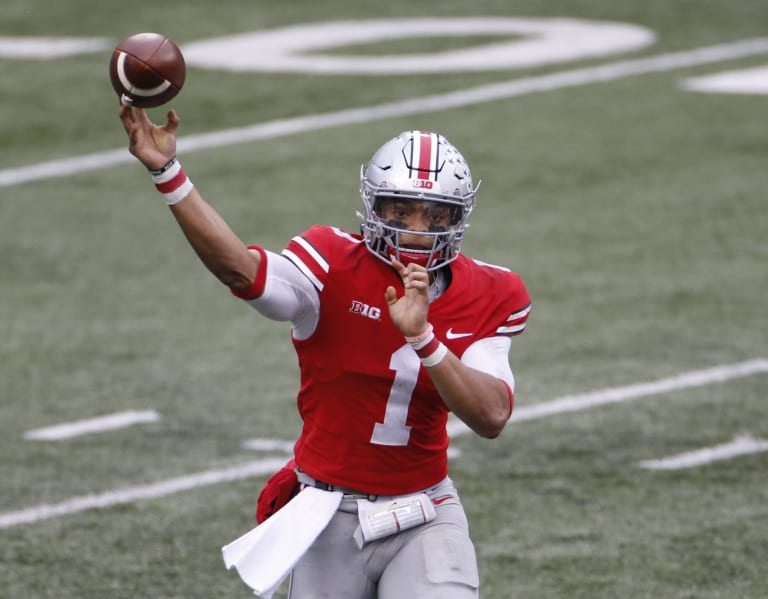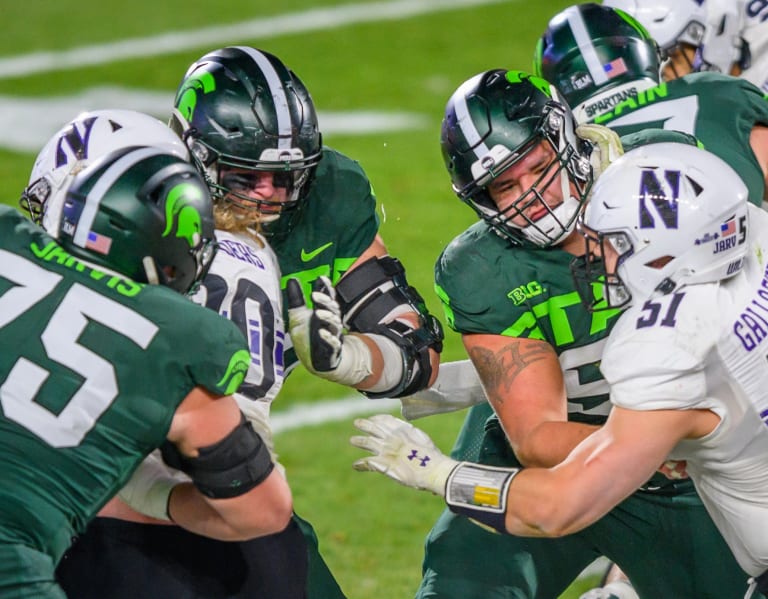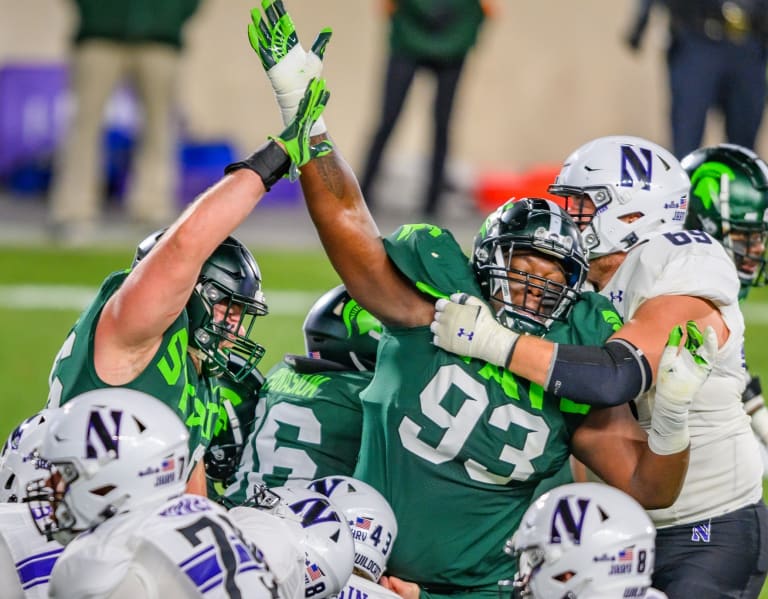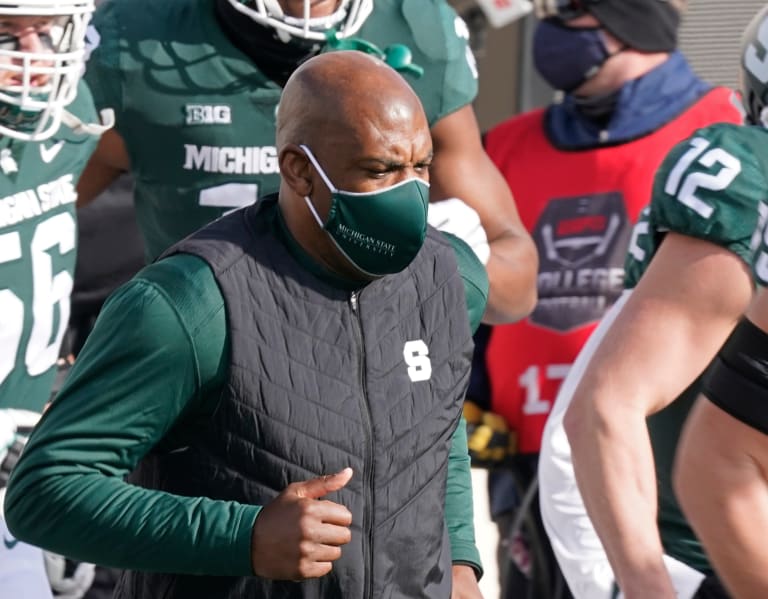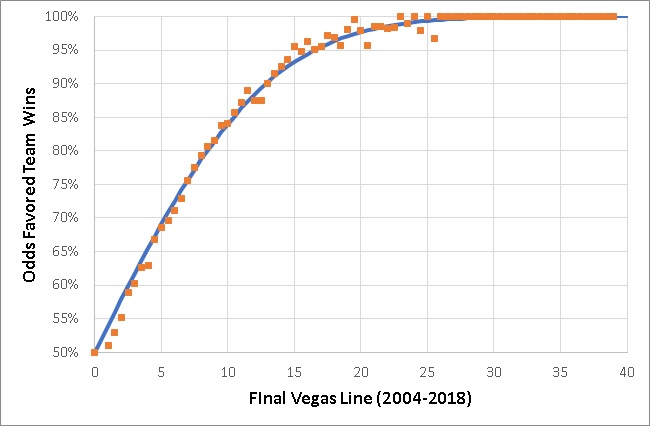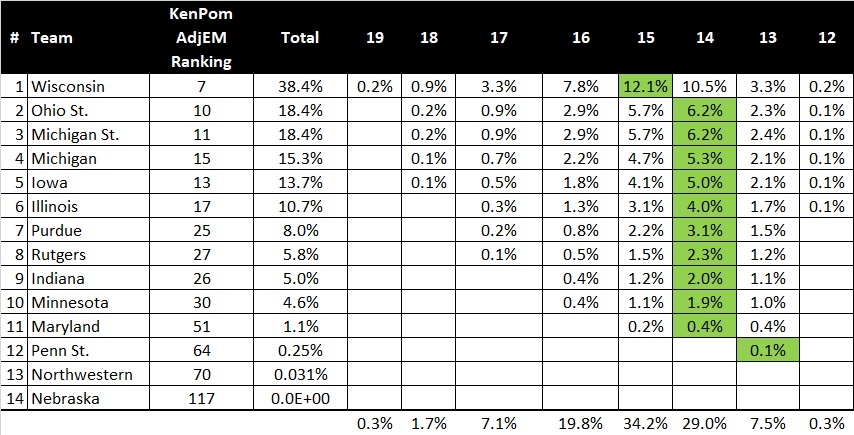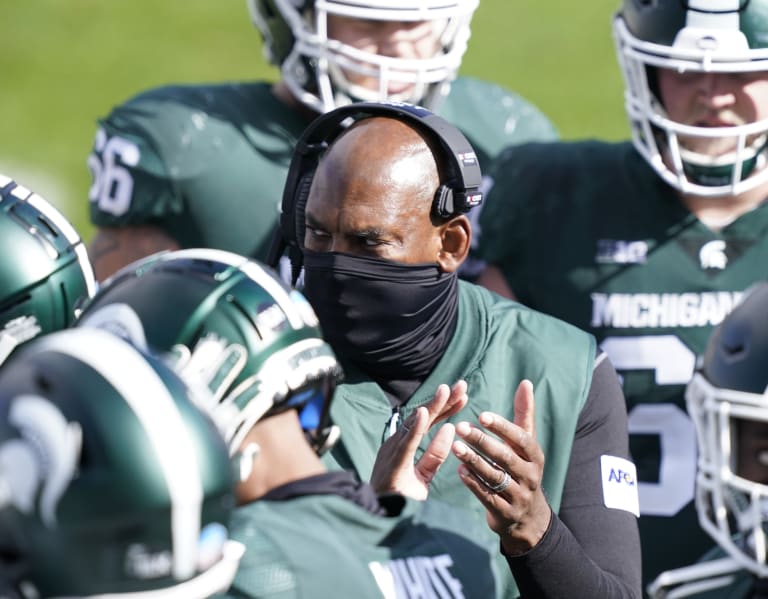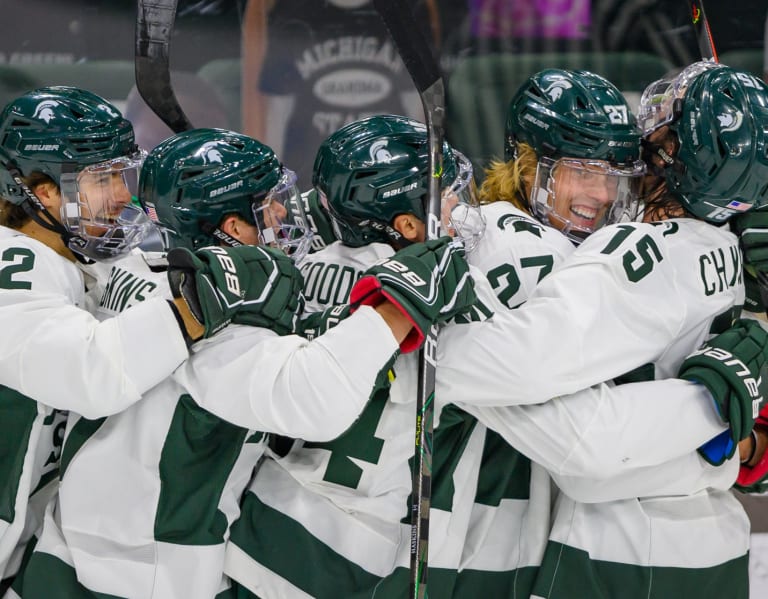This is Part 1 of 2. This doesn't include offensive personnel, but I figured you know enough about those guys. I'll get the offensive guys done in a few minutes.
Pre-Snap Read: Michigan State vs Ohio State
By Jim Comparoni
SpartanMag.com
East Lansing, Mich. - Ohio State is the better team. Everyone knows that. But the scoreboard doesn’t know that. And when they turn the scoreboard on, Ohio State will have 60 minutes to prove its the better team to the scoreboard. Ohio State had better not come in here thinking it can waste any of those minutes.
Ohio State will be facing an average, inconsistent, improving Michigan State team that is unified, energized and has more confidence than it probably should. That can be a dangerous formula, as Northwestern found out last week. But OSU has more nuclear power than Northwestern, enough to stave off any hiccups or problems and just nuke their way to safety.
Ohio State is very good, but not as good as they think they are. The QB Justin Fields is special, but wasn’t special in his last outing. It will be interesting to see how he bounces back against a quality defensive backfield bent on testing him with some of the quizzes he failed in his last game.
I thought Fields might be the best player in college football prior to OSU’s messy 42-35 victory over Indiana. But he showed in that game that he had some shortcomings in terms of making reads and staying disciplined. Maybe it was just a one-time thing and he’ll snap back nicely in this game.
FINAL ANALYSIS FIRST
OSU is shaky in the defensive backfield. The Buckeye secondary is worse than MSU’s, Indiana’s and Iowa’s, among Big Ten teams I’ve watched closely this year.
OSU has Kerry Coombs as a first-year defensive coordinator. That’s a big-rig job for an aged career position coach. He hasn’t done well.
Quality control in the defensive backfield is not nearly at a National Championship caliber. OSU simply cannot beat Alabama, Clemson (and probably wouldn’t beat Notre Dame, Florida or even Oklahoma) with their defensive backfield playing the way it’s been playing.
They haven’t had many games or practices to sort things out, and I’m not sure they would get it sorted out with Coombs. I don’t know that he’s incapable, but he hasn’t shown so far that he is capable.
OSU hasn’t changed personnel in the defensive backfield despite some terrible mistakes that would have resulted in a revolving door for the playing group if Dantonio/Barnett were in charge.
More on the defensive backfield later.
OSU’s run defense is good, not great.
OSU’s pass rush is good, not great. That’s not a great combination for a shaky pass defense which has the worst free safety I’ve seen at OSU in years.
OSU’s run offense is good, not great. The run game can ramble nicely, but lacks some explosiveness.
Their pass game is outstanding, with Fields and the offensive system seemingly keeping things easy while riding two excellent receivers. Add Fields’ ability to run, and it’s just so hard to make this team punt, much less keep them out of the end zone. They just chunk you and chunk you and chunk you.
THE MACRO MATCHUPS
So how does all of this match up vs. Michigan State?
MSU’s run defense has been pretty good this year, ranking No. 3 in the Big Ten in yards allowed per rush at 3.4. That’s a pleasant development for people who were worried about a massive dropoff in this area due to changing to a 4-2-5. So far, it hasn’t stunt Michigan State all that bad since Iowa went for 226 in game three. MSU’s gap integrity, especially with inside linebacker Noah Harvey, has improved quite a bit over the last two games.
MSU’S RUN DEFENSE vs OSU’s RUN GAME
Can Michigan State contain OSU’s running attack? For awhile, possibly. But Michigan State will miss Jalen Hunt at defensive tackle if he isn’t able to play due to last week’s lower body injury. He was in a boot for the second half of last week’s game. No official word on his availability but it did not look good.
The redshirt-freshman has been a difference-maker this season, capable of hanging against an OSU or an Alabama. OSU can load up with the inside zone game and blast you with it, especially if you keep two safeties back to guard against the pass. You need guys who can beat one-on-one blocks inside as well as withstand double-team blocks. Hunt can do that.
Naquan Jones can do some of that. Dashaun Mallory can do some of that. But they can all do it so much better if they had Hunt with them to tag team and reduce the wear. Jacob Slade played 38 snaps last week and has started most of the season. He’s capable. He can hang in a game like this. But I don’t know who the new fourth DT will be, if they use one. You need a full set of four tires at DT against OSU, among other things.
OSU leads the Big Ten in rushing offense (233 yards per game) and yards per rush (5.2).
OSU gets rolling with the outside zone, usually behind tight end blocking. And you have to honor QB Fields with the bootleg keeper on the other side, which reduces your pursuit.
RB Master Teague is a good truck, but I’m not sure about his vision or ability to bounce to open space for the home run. He’s good, but he’s not JK Dobbins.
Michigan State tackled extremely well last week. Michigan State might have some bangs and bruises after a physical game against Northwestern. These OSU guys are harder to tackle than the Northwestern guys.
OSU’s run blocking is good, not great. I don’t see the freight train people like Wisconsin. Individually, their o-line is better than Iowa’s but I don’t think they work together as well. Still, their stats are impressive.
I think their run game is helped immensely by their pass game. Opponents are reluctant to play with an extra man in the box on defense. Opponents want to play two safeties deep to try to contain the pass game first, and that makes things less crowded for the run game.
MSU’S PASS DEFENSE vs OSU’s PASS OFFENSE
OSU leads the Big Ten in yards per pass attempt (10.7), well ahead of No. 2 Maryland (8.3). [Michigan State is No. 8, by the way at 7.0).
Fields makes it all look so easy, from the roll out passes to the drag routes, to the deep seam routes and posts, to the ball-control swing passes. Everything seems to work and the ball never seems to hit the ground. Until last week.
Indiana frustrated him with their changing coverages and shape-shifting pressures. He encountered some problems early, and then compounded it by forcing bad passes and making mistakes. He was intercepted three times, marking the first time all year he had thrown a pick. Last year, he threw 41 TDs and only three interceptions.
The guy just flat doesn’t throw interceptions.
But he did in the last game.
So THE big question is whether Michigan State can emulate and replicate some of the things Indiana did.
Well, not exactly the same things Indiana did, but Michigan State CAN operate within the same family of concepts and changing pictures that bothered Fields last game.
Michigan State’s pass defense grew immensely during its victory over Northwestern. Michigan State changed coverages seamlessly and bothered Northwestern QB Peyton Ramsey, especially late in the game, with cover-three, cover-three lock, cover-four, cover-one and cover-two, all used interchangeably in the last five drives of the game, none of which resulted in points for the Wildcats. You don’t need to know how each of those coverages work. Just think about a MLB starting pitcher needing to have four pitches. Then think about a MLB pitcher who has six pitches. That was MSU’s pass defense last week.
But that was against Northwestern. Ohio State is a much more difficult test. So you can’t expect to keep OSU to 4.8 yards per attempt like you did with the Wildcats. As stated, OSU averages more than 10 yards per pass attempt.
Fields averaged his usual 10 yards per pass attempt against Indiana’s excellent pass defense last game (18 of 30 for 300 yards), HOWEVER he was baited into three interceptions.
Indiana will turn you over, and sack you, more than any team in the Big Ten. OSU fell prey to that web last game and it almost cost them a victory.
That being said, OSU still managed to score 35 points on offense. That’s after Indiana had a “good” day in pass defense.
So we have to define our terms here. It’s possible that Michigan State could play quality defense, contain the run a little better than Indiana did, and maybe “hold” Ohio State to 8 yards per pass attempt. Well, if they do those things, the Spartans are still going to give up 30-plus points.
Can they turn over OSU the way Indiana did while “holding” OSU to 35 points? That seems doubtful. As good as MSU’s pass defense looked last week, Michigan State doesn’t force turnovers and sacks as well as Indiana does. And this is going to be a Justin Fields bent on improving over what he considered the worst college game of his career.
As for OSU’s wide receiver personnel, No. 5 (Wilson) and No. 2 (Olave) are tricky-quick AND fast and just plain hard to cover, especially within coach Ryan Day’s simple yet complex system. Those guys just get open. Michigan State has improving coverage men. Kalon Gervin provided perhaps the best coverage of his career last week after missing a game due to injury. Shak Brown has five interceptions on the year and is a quality cornerback. Xavier Henderson and Tre Person are quality safeties. Those four, plus freshman Angelo Grose, are learning to play together extremely well.
You can have all that at Michigan State, but 5 and 2 are still going to get open, and Fields is going to deliver it on target. And if they are covered, Fields has the legs to tuck and run for 15 or 20 yards on you. That’s the backbreaker. As hard as it is to stop all their other stuff, IF you are fortunate enough to have a good defensive call and good execution, he can tuck and run and get 15 on you anyway. Or he can scramble, keep his eyes down field and beat you with an impromptu flip, like he did vs Michigan State last year. He drove Dantonio crazy with that stuff last year, and Dantonio just had to respectfully tip his hat to a truly special QB.
If there’s a negative to Fields’ game, it’s that he sometimes holds the ball too long. This has been a factor in OSU ranking second-to-last in the Big Ten in sacks allowed. Fields gets sacks a lot because he holds the ball a long time.
I kind of understand why he holds the ball so long. He has strong faith that 5 or 2 are going to get open. The longer he holds it, the better chance they have to get open. Some of his sacks come when he tries to elongate the play by half-flushing out of the pocket. Again, all understandable.
Holding the ball an extra beat leads to more sacks but it probably helps his completion percentage because he rarely unloads the ball just to abort a mission. Maybe he’s trying to protect those stats. Wouldn’t surprise me. Would he rather take a sack than have an incompletion go against his numbers? Makes me wonder sometimes.
Michigan State is No. 4 in the Big Ten in yards allowed per play. Not bad. Not a bad defense. But Indiana has a good defense too, better than Michigan State’s. And OSU went through Indiana for 607 yards on a “bad” day for the OSU offense.
OSU has scored 52, 38, 49, 42 points in its four games thus far. You can probably expect a similar figure against Michigan State.
Can Michigan State possibly keep up? Highly unlikely. Michigan State needs OSU to make the same interception and coverage mistakes that they made against Indiana, but Michigan State doesn’t have the skill in the pass game to force the type of coverages mistakes OSU committed against Indiana. But OSU will probably spring a few leaks anyway.
MY BIG QUESTION
Ohio State has played only one football game in the last 26 days. That’s usually not a big problem at bowl season. But bowl games are packed with practices leading up to the game.
OSU’s practices were interrupted last week. They’ve had two games canceled in the last three weeks. Their ability to get on the practice field and correct mistakes has been short-circuited. Their head coach, Ryan Day, hasn’t been on the practice field with them all week and won’t coach them this week.
This is a sloppy OSU team in terms of pass protection and pass defense that needs games, practices, corrections and improvement. They’ve got the pure horsepower to likely beat Michigan State something like 49-10. But will OSU be a little rusty, a little distracted by the questions as to whether this game will be played, and whether OSU will become eligible for the Big Ten Championship Game and thereby the College Football Playoff. And what about the talk that Michigan might try to opt out of its game against OSU next week. OSU has been planning to hang 100 on Michigan.
But first, can they operate like an improved machine against Michigan State despite the lack of games and practices?
I assume the Buckeyes will be just fine. But - aside from Alabama - no assumptions have been safe in college football this year.
If there is a path to competitiveness for Michigan State in this game, the distractions and rustiness that Ohio State COULD affect the Buckeyes would certainly have to be a factor. Ryan Day says OSU will be slightly short-handed, personnel-wise, due to COVID-19 positive tests. We don’t know which players might be affected, but Ohio State has plenty of players at all positions … except in the secondary, apparently.
MSU’S OFFENSE vs OSU’S DEFENSE
Indiana’s Michael Penix threw for 491 yards on 27 of 51 passing with 5 TDs and 1 INT.
Rutgers’ Noah Vedral and Artur Sitkowski combined for 232 yards passing on 34 of 49 accuracy with 0 TDs and 0 INTs.
Penn State’s Sean Clifford completed 18 of 30 passes for 281 yards with 3 TDs and 1 INT.
Rutgers and Penn State are as aerially-challenged as Michigan State is.
Michigan State is nowhere near as potent through the air as Indiana. But Michigan State might be able to get into the 200s IF the Spartans are able to play complementary football, a Mel Tucker likes to say, and establish the run.
Penn State could NOT establish the run vs OSU and basically stopped trying. Indiana did worse, netting -1 yards rushing.
Nebraska, and to a lesser extent Rutgers, got things going on the ground.
OSU ranks No. 4 in the Big Ten in yards allowed per rush attempt at 3.5.
OSU has a good defensive front seven, but they are not ball-busting great. OSU is prettier in the front seven than Northwestern, but overall they are in the same ballpark.
Michigan State stunned Northwestern by rushing for 195 yards last week. Northwestern was a little flat and stale after its big win against Wisconsin. That was part of it. The other part is that Michigan State was fresh and full of belief after a week off and constructive practices.
In order for Michigan State to stay competitive in this game against Ohio State, the Spartan rushing attack has to show signs of being as good as it was last week. Nebraska rushed for 210 yards against Ohio State. That was in the opener, which seems like YEARS ago on Oct. 24. But still, OSU is merely good, not great, in run defense. That doesn’t mean Michigan State is capable of rushing for 175 against the Buckeyes. But I wouldn’t bet my dog against it.
Michigan State rode the inside zone run, and some zone read option, to a healthy daily allowance of run yardage last week.
Michigan State introduced wider splits a couple of times. The zone read option was used a little more than usual. Michigan State also did some new things a couple of times with the front side pull guard acting like he was going to pull out front and fold, but he would then ease up and capitalize on a favorable angle.
Michigan State o-line coach Chris Kapilovic is working with some decent, not great, talent at Michigan State. They are improving steadily. He is adding little nuances each week. Is it possible they can continue to improve and MSU’s run game can carve out a level of effectiveness against this good, not great, and potentially rusty and distracted (and maybe even short-handed) Ohio State defensive front?
Hey, it’s 2020. I’m not writing anything off.
But Michigan State is expecting to compete favorably and win the first series, and the next, and go from there. I’m not saying they will succeed. I’m just telling you they are a band of 75 guys, including a bunch of Ohioans, that are still having fun playing this sport.
As shaky as Rocky Lombardi has been at times, IF he has a decent run game on his side, and IF Michigan State avoids turnovers, and IF Michigan State manages to punt the ball better than your local high school team, then Michigan State MIGHT be able to do decent things with field position, contain the run, and maybe slow down Fields a bit with some changing coverages and coverage pressures, that the Spartans could be a bounce, break, pick-six away from making this interesting.
Lombardi isn’t capable of carrying this thing by himself. But if he has a good rushing attack, he can then go to work against OSU’s weakness. It’s secondary. He won’t throw for 491. Michigan State won’t score 35 points. But can he get them to 27? And can Michigan State hold Ohio State to 26? Highly doubtful, but not impossible.
Day is stressing out a little bit.
"I just think the emotional toll it takes," Day said during his radio show on Thursday. "To say just, 'It's OK, we're just going to get over it' isn't fair. We've had to just continually get over the disappointments, these stops, these starts.
"To go win a football game at any level, but certainly in college football and at Ohio State, you have to get yourself emotionally ready to play any game. And when those games are taken away, it's hard to create that momentum again."
BACKGROUND INFO
* Last year, Jeff Hafley was co-defensive coordinator at OSU, along with Greg Mattison.
Hafley left to become head coach at Boston College.
Kerry Coombs is listed as co-coordinator this year along with Mattison. Coombs is 59. He was a respected high school coach in Ohio at Cincinnati Colerain from 1991 to 2006.
He was DBs coach at U of CIncinnati from 2007 to 2001, and then spent four years as CBs coach for Urban Meyer at OSU.
He left OSU for two years to be defensive backs coach for the Tennessee Titans in 2018 and ’19.
He came back to OSU this year to replace Hafley, earning $1.4 million. He’s reportedly making $300,000 more per year than Mattison.
I never thought Mattison was so special.
Coombs, at 59 years of age, is coordinating a defense for the first time at this level.
I’m kind of stunned that this hasn’t been mentioned as a national talking point when discussing OSU’s candidacy to win a National Championship. From what I’ve seen so far, they don’t have the defense to do it. At all. They can make corrections in the back end and they still won’t be good enough. But I don’t have any reason to believe the corrections are going to be made.
* In 2018, Greg Schiano was co-defensive coordinator with Alex Grinch. Grinch left to be sole DC at Oklahoma. Schiano left coaching for a year and resurfaced as head coach at Rutgers. The OSU defense of 2018 did not play well. Too many gap assignment errors early in the season against TCU, and it never cleared up, eventually leading to the shocking blowout loss at Purdue.
Basically, OSU fixed its defensive problems last year with Hafley, and then he left. Now they have Coombs. Every year they get further away from the Urban Meyer era, I wonder about quality control. This year, I'm wondering more. Fields is ultra special. After Fields is gone ... we'll see.
* OSU’s results this year:
Ohio State 52, Nebraska 17
Ohio State 38, Penn State 25
Ohio State 49, Rutgers 27
Ohio state 42, Indiana 35
None of those games were quite as close as the score indicates, other than the Indiana game, with the Hoosiers fighting back from a 35-7 deficit.
After that game, Day told his players in the locker room that they needed to have more of a killer instincts, to put teams away, not let them hang around.
That all sounds good, but that’s harder to do when your defensive coverages keep blowing gaskets and the OSU coaches keep putting the same players out there.
OSU is very good. And if Fields is right, they can put 50 on almost anyone. But the Buckeyes don’t look like a National Championship team to me. Can Michigan State stay with 20 points of this type of team? That’s what we’re going to find out in another fun, pressure-free, measuring-stick exam for Spartan football as we continue to take inventory on Mel Tucker and what’s in the cupboard.
But for this piece, let’s get back to the Buckeyes:
THE MICRO: Ohio State Personnel
DEFENSE
DEFENSIVE LINE
The Skinny: They have tall, athletic, pretty defensive ends straight out of pass rushing central casting. However, they don’t play quite as well as they look. They’re good, probably NFL players at d-end, but not great. Not as good as last year.
D-tackles are good, but not dominators.
Pass rush is good, not great. If Michigan State could keep Michigan’s Kwity Paye and Aidan Hutchinson quiet, as well as Northwestern’s Eku Leota, then Michigan State has a decent chance to keep OSU’s defensive ends quiet as well.
OSU doesn’t blitz any more than the average team. It’s not like they’re going to rain pressures at you from every angle.
DEFENSIVE LINE
DE 0 JONATHON COOPER (6-3, 257, Sr., Gahanna, Ohio)
* Was a 5.9 four-star, ranked No. 4 in Ohio.
* His senior year in 2019 was snuffed out by an ankle injury, so he redshirted and returned.
+ Quick with slants inside, crossing your face and penetrating.
+ Quick inside move for sack in 1Q vs replacement LT of Indiana.
+ Pretty good shoulder club and bend on an outside rush late in the Indiana game.
* He has had a lot of pass rush attempts this year but only 1.5 sacks.
* I’ve seen projections that he is likely a late-round NFL Draft pick. That sounds about right to me.
(9 Zach Harrison, Soph., long-armed d-end. Played 30 snaps against Indiana.
* Was a 6.1 five-star recruit, ranked No. 1 in Ohio, No. 23 in the nation.
* Has 1.5 sacks on the year.
+ Good with his hands but doesn’t have great flexibility to turn the corner.
* Had a nice pressure on the QB in the 1Q against Indiana, hands to get to the outside and then closed good, not great, to get his hand on the ball while Penix was throwing.
(Harrison good with the shoulder club to get away can’t quite finish running the hoop like a Pro Bowler).
(DE 8 Javontae Jean-Baptise: Played 13 snaps vs Indiana.
NT 72 TOMMY TOGIAI (6-2, 300, Jr., Pocatello, Idaho)
* 5.9 four-star recruit, ranked No. 76 in the nation.
* Leads the team with 3.0 sacks and 3.0 TFLs.
DT 92 HASKELL GARRETT (6-2, 299, Sr., Las Vegas)
* Was a 5.9 four-star recruit, ranked No. 4 in Nevada and No. 119 in the nation.
* First-year starter, quality player.
* OSU has a way of making NFL players wait until their senior year to become starters, and that’s probably the case with this guy.
+ Pretty good shoulder club move for a sack against a waste-bending RG of Nebraska.
(52 Antwuan Jackson, No opinion)
DE 54 TYLER FRIDAY (6-3, 265, Jr., Ramsey, NJ)
* Was a 6.0 four-star recruit, ranked No. 2 in New Jersey and No. 68 in the nation.
+ Pretty good shoulder-club/arm-over to beat Rutgers TE for a QB hit in the 1Q.
* No TFLs on the season thus far.
* He had the speed to peel him off and cover a RB in pass coverage down the sideline as part of one particular pressure. It’s not something OSU wants on a regular basis, but they’ll peel him off as part of a zone blitz or man drop on occasion. And he looks like he can do it, to give you an idea of what type of athlete we’re talking about.
(DE 11 Tyreke Smith, was a 6.0 four-star recruit, ranked No .2 in Ohio and No 34 in the nation.
+ Good long-armed bull rush for a pressure in the 1Q vs Indiana. Good with the bull rush for another pressure, later.
* Showed crazy good speed for a d-end in running down Rutgers RB Pacheco two games ago on a trick play that got out.
* Has four tackles on the year.
* If you run outside zone, these DTs 92 and 72 will push your pull guards a yard behind the line of scrimmage as they try to run wide. And the DE 9 will do the same at the edge. That bottles up your RB and allows OSU’s heat-seeking inside LBs to come downhill right at your chin for a pop at the line of scrimmage. Michigan State hasn’t been a good outside zone team this year and I wouldn’t expect much progress there this week.
* Against the inside zone, the DTs are good, but not disruptively dominant. Michigan State of a month ago would have had a miserable time against their DTs. Michigan State of last week should have a shot to function okay.
OSU LINEBACKERS
* OSU will keep three LBs on the field most of the time, other than third-down passing situations. They are a base 4-3 team. The size and athleticism of LBs Baron Browning and Pete Werner are part of what make the Buckeyes feel they are special enough to go with a standard 4-3, even against three- and four-WR sets.
OSU likes to have that run-stopping, thumper, tail-kicking LB size on the field to stop the run but also feels that those guys move well enough to help defend the pass, inside or outside, via zone or man. That’s asking a lot. But when you have athletes like OSU, you can ask a lot from them - in theory. And the theory would seem strong if OSU’s pass defense were better.
**
In the back seven, OSU’s base defense goes with one safety and three cornerbacks. They did this last year too.
Sometimes, they will take one CB out and put a second safety in. Against Indiana, they went about half-and-half between three CBs and two CBs.
Even against Indiana’s four-WR sets, OSU would stick with three LBs, putting one of the LBs on a split-out tight end. This is the antithesis of a 4-2-5. OSU feels its big LBs are athletic enough to cover in space if necessary.
Whereas Michigan State fans wonder if a 4-2-5 can match up physically to an Iowa, Buckeye fans are wondering if it’s a mistake vs 3 and 4 wide outs to play with three LBs, and press three CBs and a single safety deep? Why not take one of the LBs off the field, add another safety, and have him roam and morph around in coverage help?
That’s college football defense these days. Pick your poison.
OSU’s pass defense problems aren’t the fault of linebackers. However, if they played with five DBs more often, maybe some of those pass plays that have gotten out wouldn’t have gotten out.
The way OSU plays it, OSU is almost always “plus one” in the box against the run. And they usually do it with press man-to-man on the wide outs. That leaves only one safety for the deep middle.
They figure they’re going to take away the run, and their athletes are good enough to cover your receivers and they only need one safety to help over the top.
Well, we learned that OSU’s DBs were NOT athletic and skilled enough to cover Indiana’s WRs, especially with that QB Penix slinging it. Michigan State isn’t equipped to do the same thing (although it was a week ago when I said Michigan State wasn’t equipped to do things on the ground against Northwestern that Wisconsin had done. I was wrong about that. Michigan State out-produced Wisconsin on the ground).
OSU leaves its single free safety on a trapeze without a net quite often, and he has had some terrible slip-and-fall accidents this season. More on him and the secondary later.
The LB Skinny: Some say it’s the best linebacking trio at OSU in years and years. I wouldn’t go that far. They’re good. About like Northwestern’s in overall effectiveness, although Browning isn’t similar to anyone physically. He’s a bit of a freak, in terms of size and athleticism. Still learning to play with all that ability.
WILL 20 PETE WERNER (6-3, 242, Sr., Indianapolis)
* Was a 5.8 four-star recruit, ranked No. 4 in Indiana.
* Versatile LB who can drop and cover an inside WR in zone and turned up the sideline to cover IU’s Whop Philyor on an out-and-up on a third down, covered him well on that INC.
* Three year starter, graded out internally at the “champion” level in eight games last year.
MLB 32 TUF BORLAND (6-1, 234, Sr., Bolingbrook, Ill.)
* Was a 5.7 three-star recruit, ranked No. 9 in Illinois.
* Multi-year starter, multi-year captain.
* Good quickness, as tough as his name, decent speed.
SAM 5 BARON BROWNING (6-3, 240, Sr., Fort Worth, Texas).
* Former 6.1 five star recruit, ranked No. 3 in Texas, No. 9 in the nation.
* First year as a regular starter.
* Former MLB who played behind Borland has moved to outside LB.
* He stands out when he roams the field as a guy who is as big as some defensive ends, yet he plays outside linebacker, and they keep him on the field to drop-zone in the slot.
* He has quick reaction time a fast first step when breaking on the ball and then hits like a truck when he gets there because he’s … big, fast and into it.
* No teams would play a 4-2-5 if all teams had a Baron Browning that they could use in patrolling the flats.
* Graded out internally as a “champion” in four games last year.
OSU SECONDARY
The Skinny: The safety, 23, Hooker, has been woeful.
OSU graduated three DBs to the NFL after last year.
In the second half of three of their games, OSU has been exposed through the air.
OSU’s slot cornerback, Cameron Brown, was lost to injury in the Penn State game. His replacements have been shaky.
* OSU’s base defense is to go with 3 CBs and 1 safety.
They use CB Wiliamson in the slot.
* As poorly as OSU’s secondary played, three of the four starting DBs played every single snap against Indiana. Dantonio/Barnett never would have stood for that.
CB 24 SHAUN WADE (6-1, 195, Sr., Jacksonville, Fla.)
* Was a 6.1, five-star recruit, ranked No. 5 in Florida, No. 24 in the nation.
+ Pick six against Indiana, undercutting an out route to the field and taking it back 36 yards giving OSU a 42-21 lead.
* Played slot CB last year, moved to outside CB this year.
- Struggled against Penn State’s Jahan Dotson (8 catches, 144 yards).
- Allowed 2 TDs against PSU and one TD against Rutgers.
- Allowed a 56-yard TD to IU’s Fryfrogle. Wade played press. IU threw a back-shoulder deep 50-50 ball. Fryfrogle got away with a push. Wade fell. Safety Hooker loafed in coming over the top late.
* Preseason All-America candidate who hasn’t played as well as the hype.
CB 21 MARCUS WILLIAMSON (5-10, 186, Sr., Westerville, Ohio/Florida IMG Academy)
* Was a 5.8 four-star recruit, ranked No. 52 in Florida.
* Struggling at slot cornerback. Inconsistent.
CB 7 SEVYN BANKS (6-1, 200, Jr., Orlando, Fla.)
* 5.7 three-star recruit, ranked No. 74 in Florida.
* No opinion.
SS 23 MARCUS HOOKER (5-11, 200, Soph., New Castle, Pa.)
* Was a 5.7 three star recruit, ranked No. 21 in Pennsylvania.
* Struggling badly.
* I don’t mean to be mean, but he’s the worst Ohio State safety I’ve seen in a long time.
- Think about some of David Dowell’s coverage busts and miscommunications last year and the year before. There were a few. Now roll them all up into one game, and that was Marcus Hooker two weeks ago against Indiana.
* If your safety is committing assignment errors, you at least want that guy to look sleek and fast and athletic, like he can be a good player once he gets stuff figured out. But he doesn’t look fast.
Examples:
- Was at the scene of the crime at the end of a 63-yard TD pass to Fryfrogle last week. It was cover-three and he had the deep middle and Hooker just drifted too far to the weak/side short side. He left too big of a seam.
Fryfrogle attacked that seam on a vertical dialed up as a cover-three beater. Penix delivered an NFL arm throw. Lombardi can’t do that quite like that. But it was a drift-bust of sorts.
- Allowed 33-yard TD to Fryfrogle. Hooker bit up on the run threat by Fields, didn’t stay as deep as the deepest, and give up the TD behind him, cutting the lead to 35-21.
- Was at the scene of the crime on a 16-yard crossing route to WR/RB Ellis for a TD on fourth-and-10. OSU tried to play two-deep/man-under. That was the first time all day I had seen OSU play “two-man.”
But Hooker didn’t stay on his half of the field. He took some cheese to the outside, and the crossing route ran right up the street where he was supposed to be. Not good.
As a side note, big LB Browning was assigned to cover Ellis on a crossing route. That’s part of the problem in keeping three LBs on the field against an empty set on fourth-and-10. Browning wasn’t quite nifty enough to miss the pick wash in the middle of the field, and didn’t have Hooker staying home in safety help on the other side.
- Hooker banana-peeled in run support in allowing Rutgers’ RB Pacheco to get out for a 66-yard run. After the banana peel (curved angle in pursuit), Hooker was unable to make the tackle and then was unable to run down Pacheco down the sideline.
Pacheco doesn’t have great speed, but OSU’s free safety couldn’t catch him. Sadly, OSU defensive end Tyreke Smith ran him down and pushed him out of bounds inside the 10. Hill ran side by side with Hooker on this play and Smith, at 6-4, 267, had better straight-line speed than the Ohio State safety.
- Hooker missed a poor attempt at a shoulder tackle on a crossing route vs Rutgers, which got out for about 30 yards to the 1-yard line.
- Missed a tackle on RB McCaffrey of Nebraska on the first play of the game, for a gain of 47 (30 after Hooker’s missed tackle). (McCaffrey is a back-up QB, but he played RB on that play).
**
OSU often subs Williamson out and goes with Josh Proctor as a safety. Proctor can play in the slot as man-to-man or as a safety as part of a two-deep. He’s still trying to find his sea legs.
(S 41 Josh Proctor will play. began playing with him in a 2 safeties look late in 1q. Will play some slot safety. 41 was late with a banjo switch on 4-yard TD pass which tied the game at 7-7. Indiana ran a bunch set with a rub. OSU needed to banjo it, which is an old school way of saying they needed to do a basketball switch)
* 41 was getting time against Indiana, but is not economical with his footsteps. Is a step wrong here and there, allowing slight windows on curls and sideline comebacks.
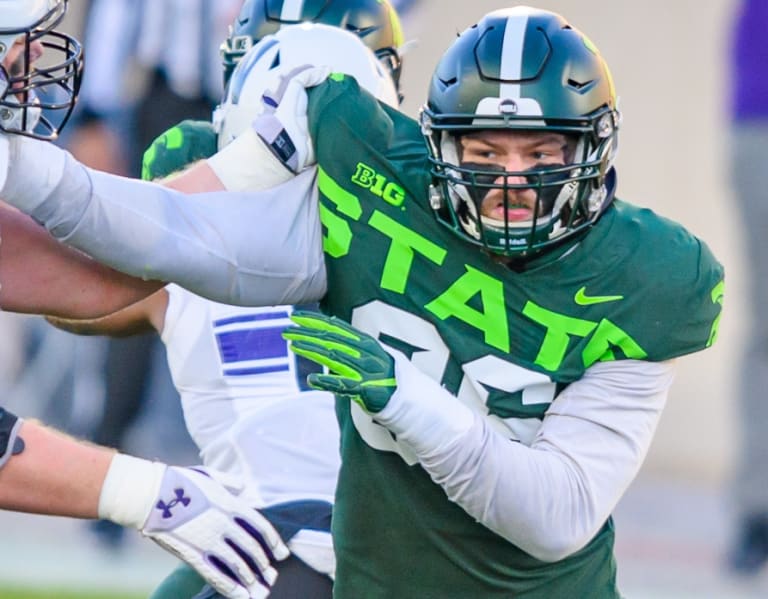

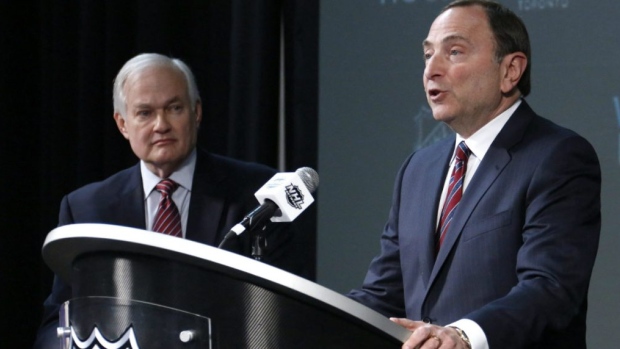

 msuspartans.com
msuspartans.com


